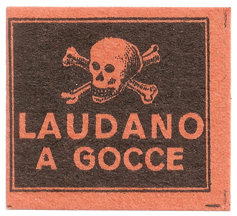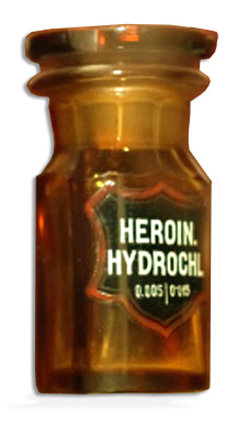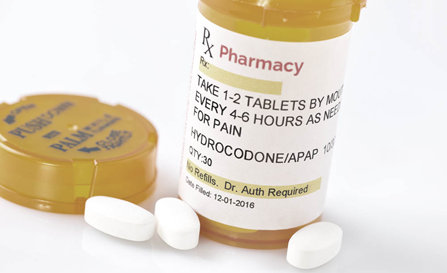Prescription Drug Abuse History

The abuse of prescription drugs in America goes back more than a hundred years to the abuse of laudanum, a mixture of opium and alcohol. This was an early remedy for pain, sleeplessness, anxiety, coughing, and diarrhea. In the 1800s, laudanum was used by doctors across the country. But it was quite addictive.
It was also part of an interesting division of addiction for people living in the 1800s. The usual laudanum addict was a Caucasian woman. Men had their own substance of addiction—alcohol. But women were not supposed to visit bars or saloons or be seen drinking so they could visit their doctors for their addictive substances. And they did, for problems with pregnancy, childbirth, menstrual cramps or emotional problems.
Morphine Use Grows
The commercial manufacture of morphine started in Germany in 1827, and the drug became the painkiller of choice during the American Civil War. While there are conflicting accounts of the degree to which morphine contributed to cases of addiction after the war was over, it has been reported that there were ten million opium pills handed out to army surgeons during the war, and that morphine was widely used for the terrible shrapnel wounds suffered by soldiers.
In fact, the doctor who invented the Coca-Cola formula developed a morphine addiction during the Civil War and was looking for a solution. He added the recently-developed drug cocaine to his new drink and began to sell it at a pharmacy in Atlanta. Because there were few laws regulating the contents of foods or drugs, it was perfectly legal for him to do so.
In fact, the act of “prescribing” drugs like cocaine or morphine was essentially up to the consumer. Morphine and cocaine injection kits, complete with the newly invented syringe and a supply of the medication, were available from Sears catalogs.
Was Heroin a Prescription Drug?

It may seem inappropriate to include heroin in a history of prescription drug abuse but it started out in 1898 as a product of the Bayer Company in Germany. Like Oxycontin almost a century later, its addictive properties were overlooked—or concealed. And it was promoted as a remedy for morphine addiction. In fact, one philanthropic society even mailed heroin samples to morphine addicts.
In the late 1800s, you could buy any of these addictive substances from “snake oil salesmen” or anyone who sold patent medicines. The reason these concoctions were called “patent” medicines is that they were supposedly covered by patent law protection and so their ingredients were secret. Opium, cocaine, cannabis, morphine, alcohol and other addictive substances were common ingredients, even in remedies for fussy or teething babies. Not all babies survived the remedies.
In the early 1900s, these addictive substances started coming under control. The Pure Food and Drug Act of 1906 mandated that all ingredients must be labeled and the Harrison Narcotic Tax Act in 1914 brought these addictive substances under the control of doctors, requiring a prescription (and payment of a tax) for their distribution. These two laws eliminated the casual distribution of opiates, alcohol, cannabis, and cocaine.
But they did nothing to stop the illicit abuse of drugs that were supposed to be distributed by prescription only.
Of course, as these laws went into effect, some drugs dropped fully out of prescription drug status for many years. Cocaine, marijuana, opium, and heroin stopped being used medically for many years.
But several decades later, marijuana would return to prescription status in the US and in Europe and elsewhere, pharmaceutical heroin would begin to be distributed through medical channels to those heroin addicts who were unable to comply with rehab programs despite repeated attempts.
Cocaine, a stimulant, would essentially be replaced medically by methamphetamine and amphetamine which began to be prescribed in the 1920s. In the 1930s, the drug was available in an over-the-counter inhaler for asthma. It, too, began to be abused for non-medical purposes. Amphetamines were used by many countries during World War II to keep pilots and soldiers awake and energetic and to keep plant workers in mission-critical factories productive. It is said that the surplus of methamphetamine in Japan at the war’s end was freely distributed to the civilian population, leading to a surge in the number of addictions. By 1954, there were more than 200,000 methamphetamine addicts in Japan.

Of course, methamphetamine and amphetamine soon began to be abused for non-medical purposes. Methamphetamine was so easy to make that in the second half of the Twentieth Century, small “mom-and-pop” illicit labs began to produce the drug. Amphetamine manufacture remained the job of the pharmaceutical companies, but in Europe and Asia, unscrupulous companies would begin to ship out millions of pills to the illicit market.
But the big story of the Twentieth Century was the rise in prescribing and abuse of painkillers, with the thousands of overdose deaths and hundreds of thousands of emergency room visits to prevent even more overdose deaths. That story is told in Part 2 of History Prescription Drug Abuse.
Resources:
 ®
®